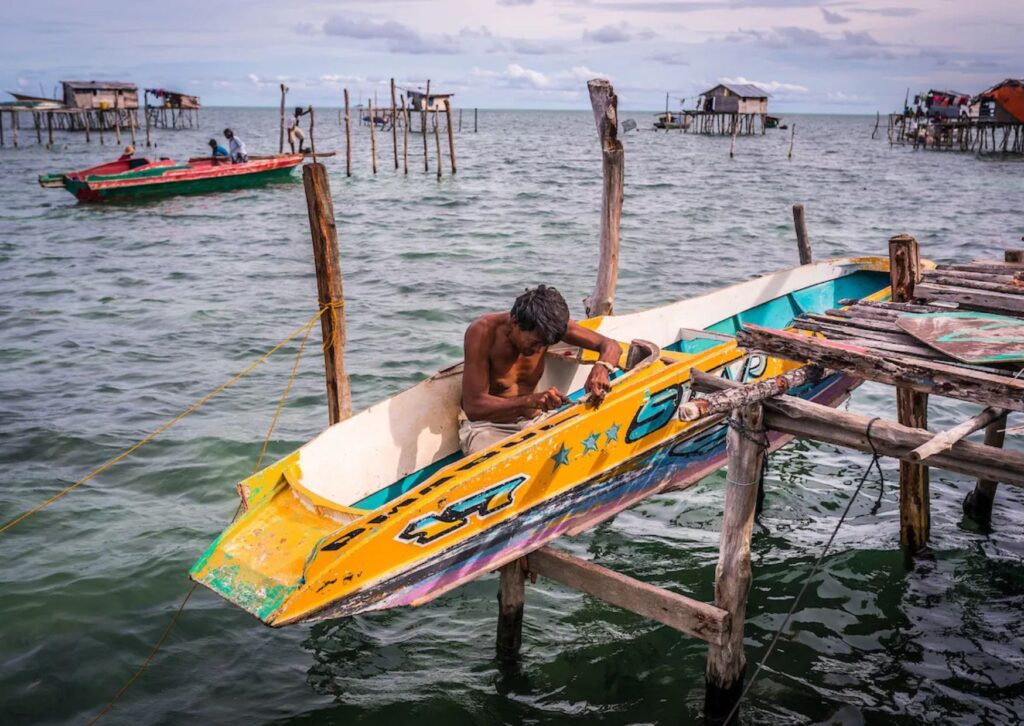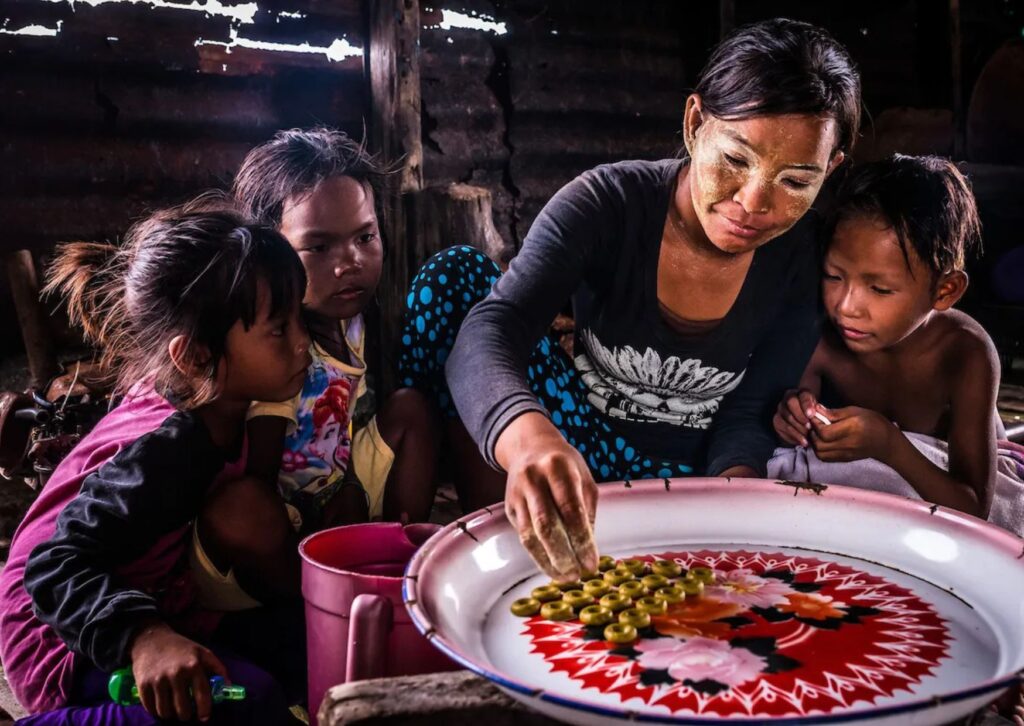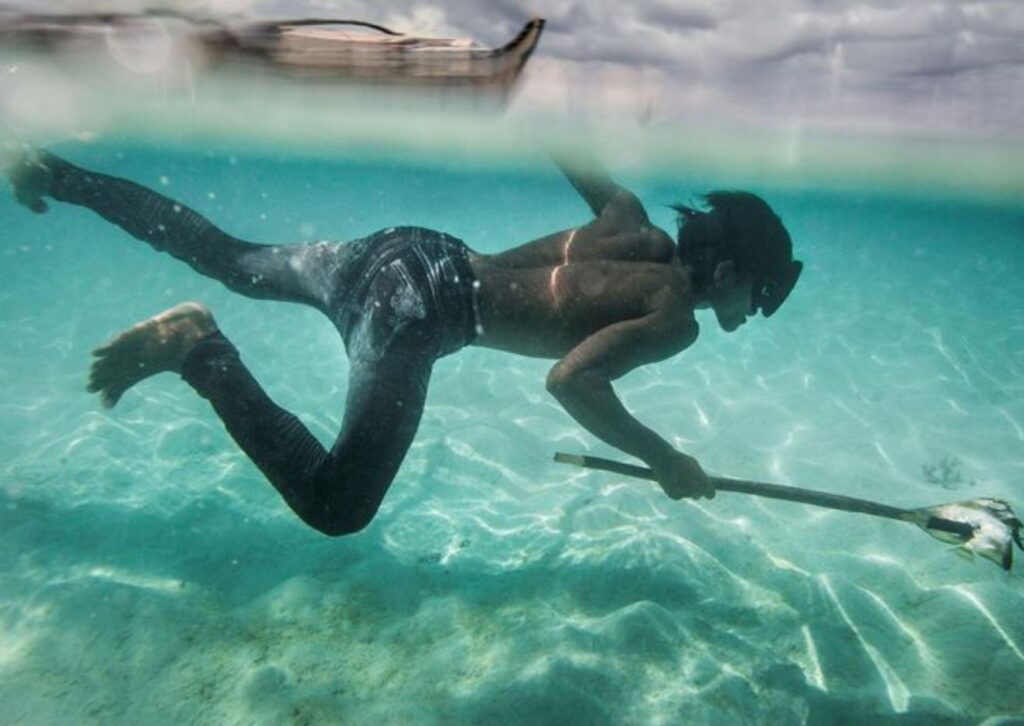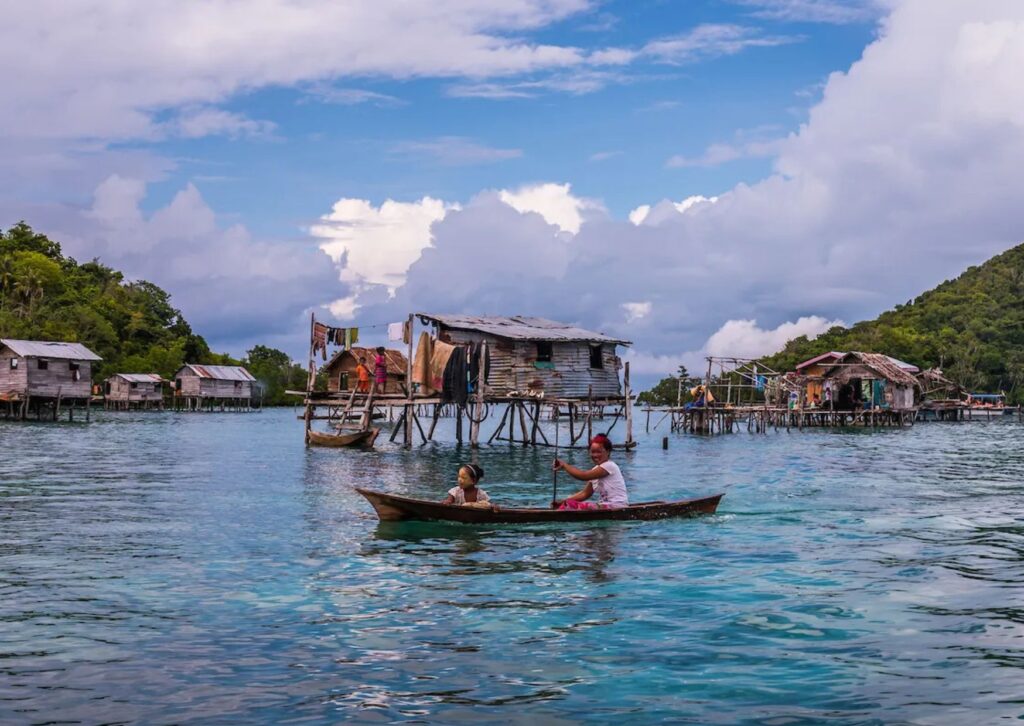Uncategorized
Bajau: Between the Sea and the Land
The Bajau tribe is a nomadic indigenous community that has the habit of moving from one place to another for generations. This makes the population of the Bajau tribe distributed in various regions such as Kalimantan, Sulawesi, Malaysia, and the Philippines. One of the villages that became a place for the diaspora of the Bajau tribe was Bajaoe Village, Bone Bay, South Sulawesi. Although distributed in various regions, some of them have the same cultural patterns or customs. They have a cultural pattern in the use of marine areas or coastal waters for generations.
They have a life motto Di lao’denakungKu’ which means the ocean and my brother, which in other words is the source of life for the Bajau tribe. The Bajau tribe has a life dependence on the ocean, they use various kinds of marine products to meet various daily needs. So in other words, the sea is a commodity, they explore the sea because they have the perception that the sea is a connecting medium and not a separator. In contrast to the general perspective of the Indonesian people who know the sea as a separator between islands (Nur, 2015).

In Nur (2015) it is said that the Bajau tribe has various labels given for their relationship with the sea, namely the sea as sehe (friend), the sea as tabar (medicine), the sea as anudinta (food), the sea as a weed (transportation infrastructure), the sea as a miner (dwelling), the sea as a pamunang ala’baka raha’ (the source of good and evil), and the sea as a mining umbo ma’dilao (the place where the ancestors of the Bajau people controlled the sea).
All of these terms relate to their people’s relationship with all the values they construct towards the ocean. Their relationship with the ocean has a sustainable value to the balance of ecosystems. There are many traditional rituals that have value in protecting the clay environment, one of which is a ritual by performing it during the famine season of fish and other marine species called Sangal (Nur, 2015). They will release species whose populations are declining at the same time. They also have an understanding of selecting marine products that are old and releasing marine life that is young and still in the maturation stage. It also does not take marine products that are in the mating season cycle or lay eggs to maintain the balance of the population with species regeneration.

One of the areas that became the diaspora in Bajaoe, Bone Bay, South Sulawesi has a history that they live elongated and cluster on the shores of Bone Bay. The Bajau tribe in Bajaoe originally lived on Bidok (boats) until the 1930s. Then in early 1935 they began to build kumpoh (temporary permanent residence). Then from this kumpoh they built babaroh (a temporary residence to rest to process marine products) on the tidal beach. From babaroh finally to a house (Nur, 2015).
The Bajau of the Sea typically maintain a subsistence-based economy, exploiting some of the world’s richest marine ecosystems – the unique combination of coral reefs and mangrove forests that characterize the Southeast Asian coast. They traditionally lived in boathouses, migrating between “moorings” in large areas according to fishing conditions, political situation and relative obligations.
Bajau fishermen adjust their fishing practices to complex lunar (diel) or lunar cycles that reflect known patterns of fish movement, spawning, and aggregation, while changes in marine conservation and selection of Bajau species and habitats also occur along with long-term seasonal variations.

The concept of time in the Bajau people is not seen in a straight or linear line as in the Gregorian concept of time, but is seen in terms of cyclic patterns that reflect tidal movements, changes in the lunar cycle, or changes in the direction of seasonal winds that have a dominant influence on fishing resulting in a lack of linear understanding of causal or causal (Clifton & Majors, 2011). The Bajau people consider each event to occur separately with no connection between the past, present, and future.
The Bajau tribe has a local wisdom called Bapongka which contains values related to the use of ecosystems and marine products and how unconsciously the ways passed down from the ancestors of the Bajau tribe have an impact on the sustainability of environmentally friendly marine ecosystems. Bapongkai is believed to contain several social values that can integrate households within the Bajau tribe itself. This is related to how the Bapongka itself works which is carried out in groups and usually involves family members, to achieve the desired results. There are various taboos according to Artanto (2017) such as not being allowed to make some things into the sea, such as rice washing water, charcoal, coffee grounds, chili water, ginger water, and orange peel. If these taboos are violated, there will be consequences such as natural disasters that occur while sailing and also small fish catches to meet needs (Artanto, 2017).
Bapongka‘s beliefs are also related to the way the Bajau tribe makes a living. They simply support various individual and family needs by depending on marine products. The seafood they catch can be processed into household food, it can also be used as a product of exchanging seafood between villages, they use a barter system. In traditional Bajau cosmology – which is syncretism, animism and Islam – reveals a complex relationship with the ocean, which for them is a diverse and living entity. There are spirits in the currents and tides, on coral reefs, and mangroves. Morgan (2014) said that there is potential to align the Bajau people’s unique understanding of the ocean with broader marine conservation strategies, to facilitate them in preserving, rather than destroying, their culture and the spectacular marine environment they have called home for centuries.
Author: Pramudita Kirana
References:
Artanto, Y. K. (2017). Bapongka, sistem budaya suku Bajau dalam menjaga kelestarian sumber daya pesisir. Sabda: Jurnal Kajian Kebudayaan, 12(1), 52-69.
Nur, S. S. (2015). Pola penguasaan dan pemanfaatan wilayah perairan pesisir secara turun-temurun oleh Suku Bajau.
Morgan, J. (2014). Bajau Laut: Last of the Sea Nomads. James Morgan. https://www.jamesmorgan.co.uk/last-of-the-sea-nomads


